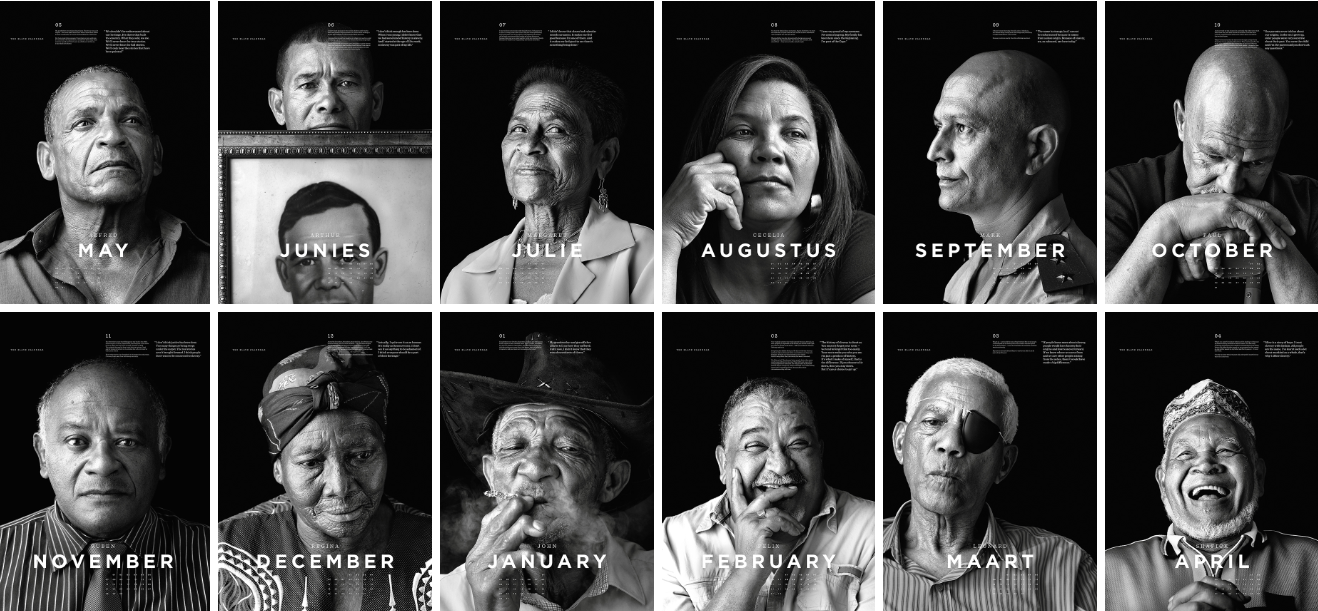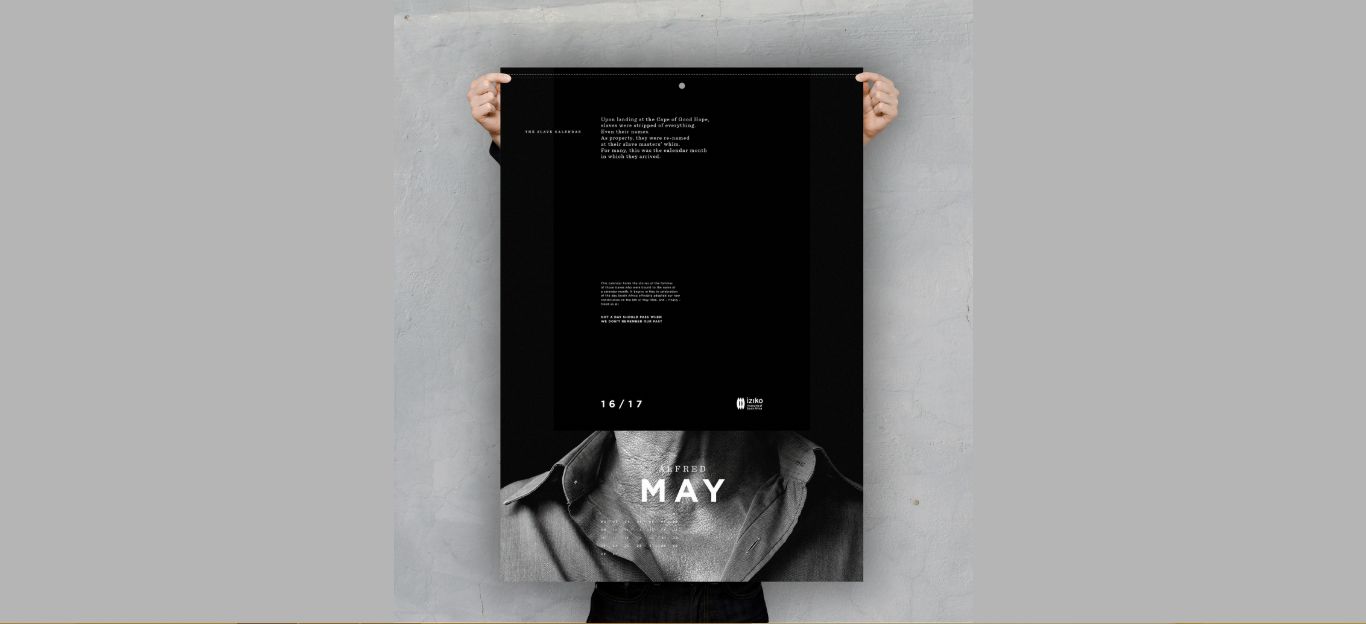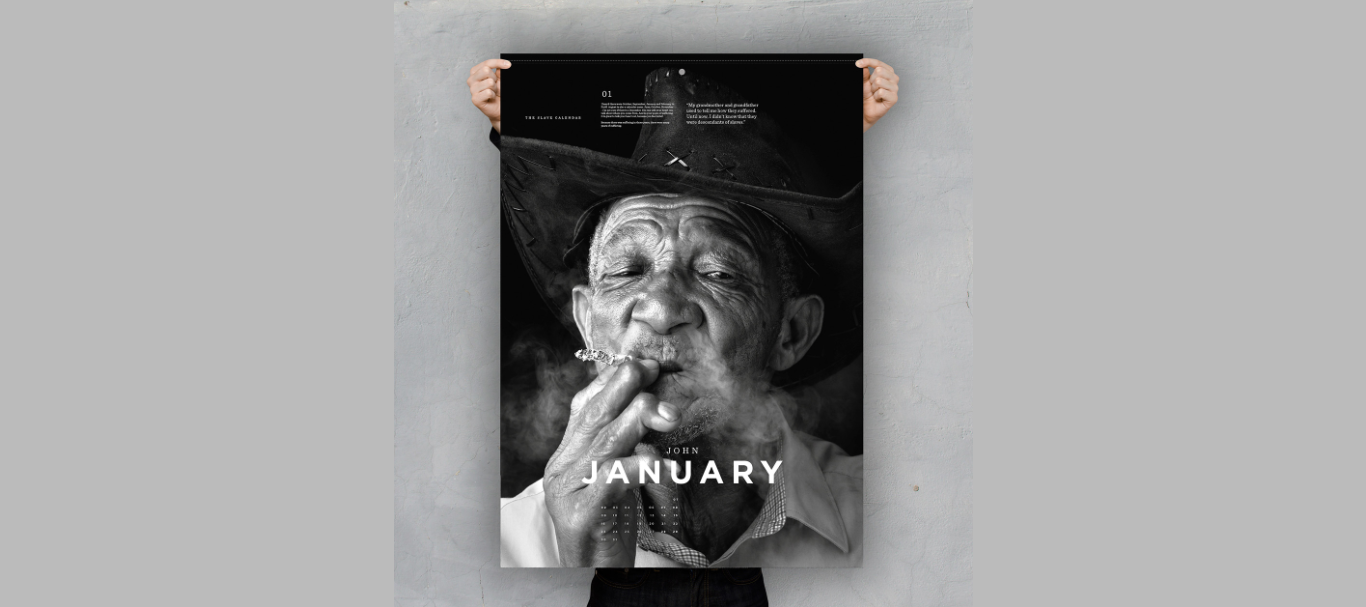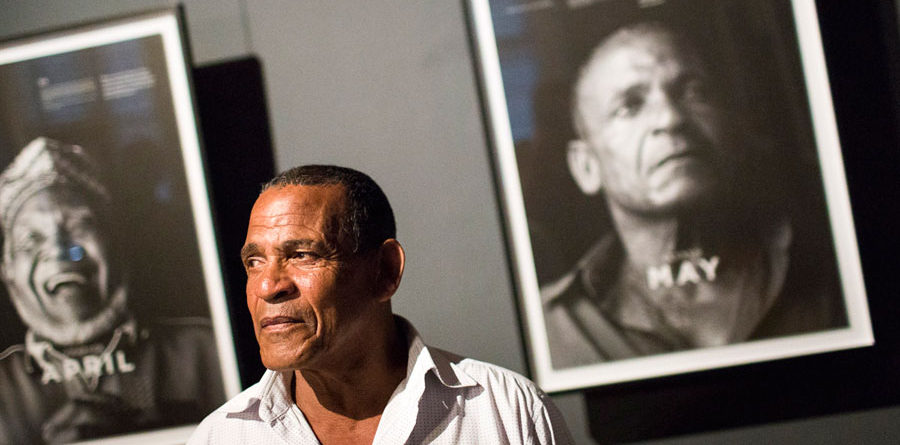The Slave Calendar: David Prior’s Portraits Preserve South Africa’s Past and Reminds Them of Forgotten History
As Archbishop Desmond Tutu profoundly intoned, the history of slavery in the Cape of Good Hope is “a story that needs to be told”. It is important to remind South Africans and the world in general of a part of South African history, that is under the threat of being forgotten despite its ripples still being felt in present day South Africa. This campaign was aimed at bringing back to the public subconscious, an integral part of their past as it is said that those who fail to learn from history are doomed to repeat it.
 The Slave Calender/ Iziko Slave Lodge Museum
The Slave Calender/ Iziko Slave Lodge Museum
Founded by the Dutch East India Company (VOC) in 1652, the Cape Colony was run basically on the labor of slaves imported into the Cape from South and Southeast Asia, Madagascar, Mozambique and a host of other nations via the Indian Ocean. Mere properties, these slaves were stripped of all their freedom and identities including their names. While some carried the names of their eventual masters, most were simply named after the month wherein they arrived. The lives of the slaves were dominated by work. Their tasks were arduous and their living conditions weren’t any less pathetic. This is especial to slaves owned by the VOC and housed in the Company’s barrack-like Slave Lodge. The slaves were locked in during the night to prevent desertion. The lodge was windowless, possessing only barred slats, making the Winter period a nightmare. Unsurprisingly, many of them died. Yet the 71,000 slaves imported into the cape between 1652 and 1834 are an indispensable part of south African history. They tilled the lands, brought with them,; cultures, ideals, religions and philosophies. They were imported and given names that will eventually become trans-generational. They largely structured the socio-economic condition of the consequent South African state. In fact, throughout the 18th century, slaves outnumbered settlers in the Cape.
 The Slave Calender/ Iziko Slave Lodge Museum
The Slave Calender/ Iziko Slave Lodge Museum
In recent times however, The Iziko Slave Lodge Museum in Cape Town, South Africa has been witnessing an alarming decadence in relevance. Visitors were low in number and the history it has been saddled with protecting was slowly getting eroded. Seeing an urgent need to re-tell these stories and bring these slaves’ history to the consciousness of the public, WPP-owned brand activation company, Geometry Global created the Slave Calendar; a campaign that looks to remind the people of a shared history.
‘‘The purpose of the exhibition is not to showcase ‘The History of Slavery’ in South Africa, but to continue to drive awareness about a tragic part of our history that is all but forgotten” , said Iziko chief executive, Rooksana Omar. “When these slaved people arrived in the Cape of Good Hope, they were treated as property. Every single thing was taken from them, including the one thing they were born with – their identity. This exhibition aims to bring these shared histories back into our collective consciousness,’’ she said.
 John January/ David Prior Photography
John January/ David Prior Photography
Created in partnership with, and for the Iziko Slave Lodge Museum, the Slave Calendar is award winning Cape Town Photographer, David Prior’s , photographed portraiture of descendants of the old slaves whose names were passed down to them by their fore parents . However, without adequate funds for proper publicity, the Calendar was initially sent to prominent South African personalities such as Patricia de Lille, the Mayor of Cape Town and Nobel Laureate Archbishop Emeritus Desmond Tutu, whose endorsements proved invaluable as it drew the attention of millions to these stunning portraits. The Museum gained a new influx of visitors who wanted to take a look. It gained further publicity from there on. It was discussed and represented on international and local audio and visual media, and in prints.
The campaigned featured the descendants of these former slaves telling their stories and history. Giving further insights into how their history has shaped their thoughts and philosophy thereby creating a network of south Africans who are listening anew to stories they seem to have been forgetting, to pasts they seemed to have turned their backs on. The campaigned turned a neglected history into contemporary conversations.
 Alfred May/ David Prior Photography
Alfred May/ David Prior Photography
Designed in black and white, some of the images possess an harrowing quality, a longing almost. It urges the people to see and to remember the slaves rather than Slavery itself. Creative Director, Gavin Wood said of their objective; “What we hope to achieve with the exhibition is to deliver these unique stories and the associated, powerfully sobering, yet uplifting message through creative and arresting portraiture.” The Calendar begin with Alfred May: an allusion to 8 May 1996 when South Africa adopted a new constitution that enshrined the principles of Fundamental Human Rights and the equality of all men regardless of race, belief and social status.



